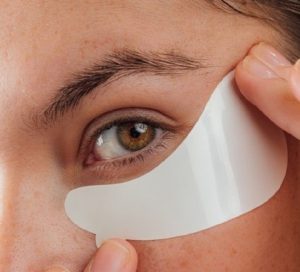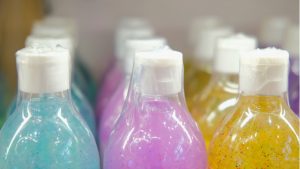The beauty industry is always cloaked in a halo of elegance and glamour that is its hallmark and a key part of its marketing strategy. But behind the glittering facade is a less glamorous B-side: it has an environmental and climate footprint that it must reduce, both because of regulatory requirements and the demands of an increasingly environmentally conscious consumer.

The luxury industry is a sector that never shrinks, not only because of the loyalty of its clientele, but also because those who aspire to become customers are not part of its usual market. But while it has traditionally been characterised by sparing neither resources nor costs, today it is also being pushed to reduce its climate and environmental impact on all fronts: low-emission fashion, perfumes with refillable packaging, recycled gold and diamonds from more sustainable sources.
This broad category also includes cosmetics and other beauty products, a sector that earns more than $600 billion a year and is associated with high-profile brands. Yet it is a minefield of sustainability, health and safety concerns, from the use of resources, raw materials and water to the impact of manufacturing processes and packaging, to the contamination of its waste, not to mention the chemical composition of the products.
The challenge of recycling water
According to the British Beauty Council (BrBC), the industry’s UK trade association, the industry is at a point where change is needed to meet the challenges of sustainability and the climate crisis. The first lies in a basic ingredient: water, which makes up 70% of beauty and personal care products and is therefore used in immense quantities—10.4 billion litres globally in 2020. One industry giant, L’Oréal, aims to recycle 100% of the water it uses in a closed loop by 2030, and other companies are committing to similar measures.

Some brands have introduced waterless products, such as shampoo powders or conditioner sticks. According to University of Southampton researcher Denise Baden, promoter of the Eco Hair and Beauty project, reducing daily shampooing and conditioning to twice a week, supplemented by the use of dry shampoo and leave-in conditioner, can cut a person’s annual environmental hair care bill from 14,222 litres of water, 1,252 kilowatt-hours (kWh) of energy and 500 kilos of CO2, to just 613 litres, 55 kWh and 25 kilos of CO2. Reducing water consumption is also one aim of a technology developed by the Spanish National Research Council and its spin-off Bioinicia, which encapsulates cosmetics in ultra-fine fibres that dissolve into the skin, maximising product penetration without the need for water or other additives.

Packaging is also an issue: in the beauty industry, aesthetics are more important than functionality, and this often leads to unnecessary elements in packaging. The paper and cardboard used annually is equivalent to almost 73,000 square kilometres of forest. The sector is the fourth largest consumer of plastics for packaging, a demand that relies on oil production and is a source of plastic and microplastic pollution; according to a 2020 report by the BrBC, 120 billion units of packaging are produced each year, and 95% are thrown away, accounting for 70% of the sector’s waste. Recycling is still an unresolved issue, and the refilling of packaging, which is starting to be applied in perfumery, is still far from being a widespread practice.
The environmental footprint of ingredients
Another thorny area is the potential damage caused by ingredients released into the environment through washing—interestingly, the hot water used by consumers for this purpose is responsible for 59% of the emissions associated with the sector—and whose volatile chemical emissions are equivalent to those caused by transport. One study found that the air in nail salons contains volatile carcinogenic compounds at levels comparable to those present in oil refineries or machine shops. Some cosmetic ingredients may affect women’s reproductive health. Regulation in this field is moving at an uneven pace: according to CNN, the European Chemicals Agency lists 2,495 substances banned from use in cosmetics in the EU, while the US Food and Drug Administration lists only 11.

Some companies are researching biotechnology to stick to the use of biodegradable molecules. Brands are increasingly avoiding the use of palm oil, which is blamed for deforestation in Southeast Asia; oxybenzone in sunscreens, a chemical linked to coral bleaching; or parabens, petroleum-derived preservatives. Ingredients like these make up 46% of the carbon footprint of Unilever’s products. Major companies such as Garnier are opting for natural ingredients sourced from organic farms, as well as replacing plastic with cardboard and developing waterless solid products.
In short, the beauty industry seems to be aware of the need for a shift towards sustainability that consumers are demanding and experts are targeting. But trends such as clean beauty or green beauty, lately on the menu for brands and influencers, raise suspicions of greenwashing in many of the companies’ claims. As the British Beauty Council notes, only “bold, urgent change” will fulfil the industry’s mission: “to encourage the intrinsic beauty of people and our planet to shine.”
Comments on this publication